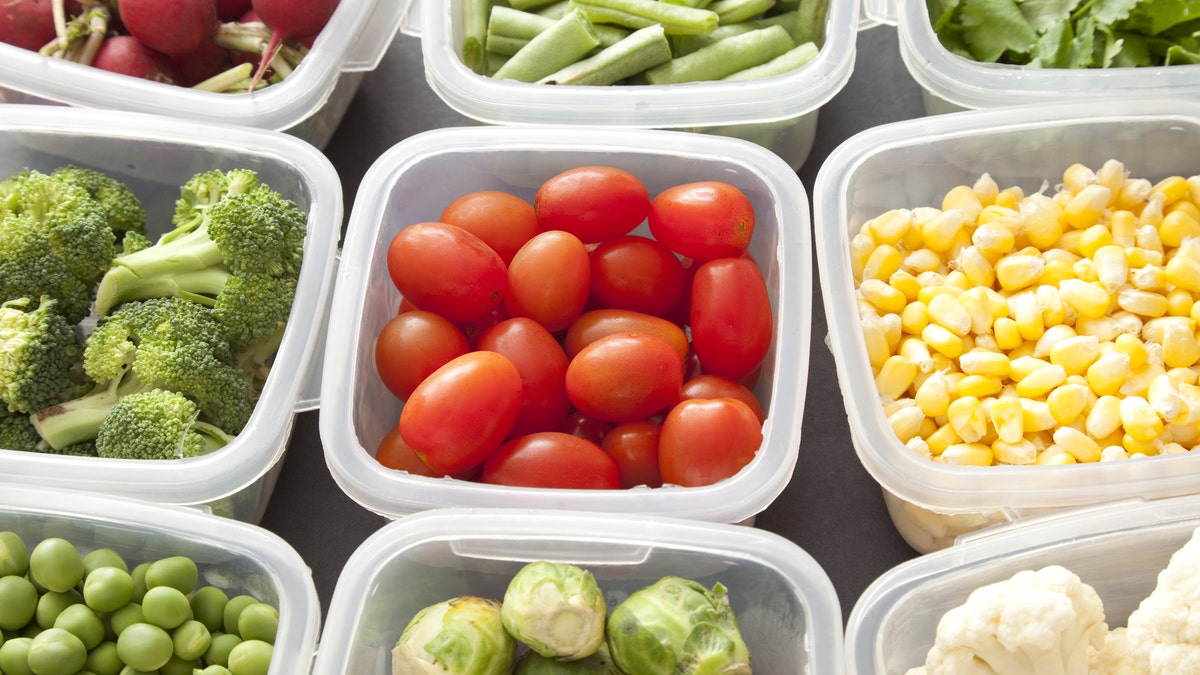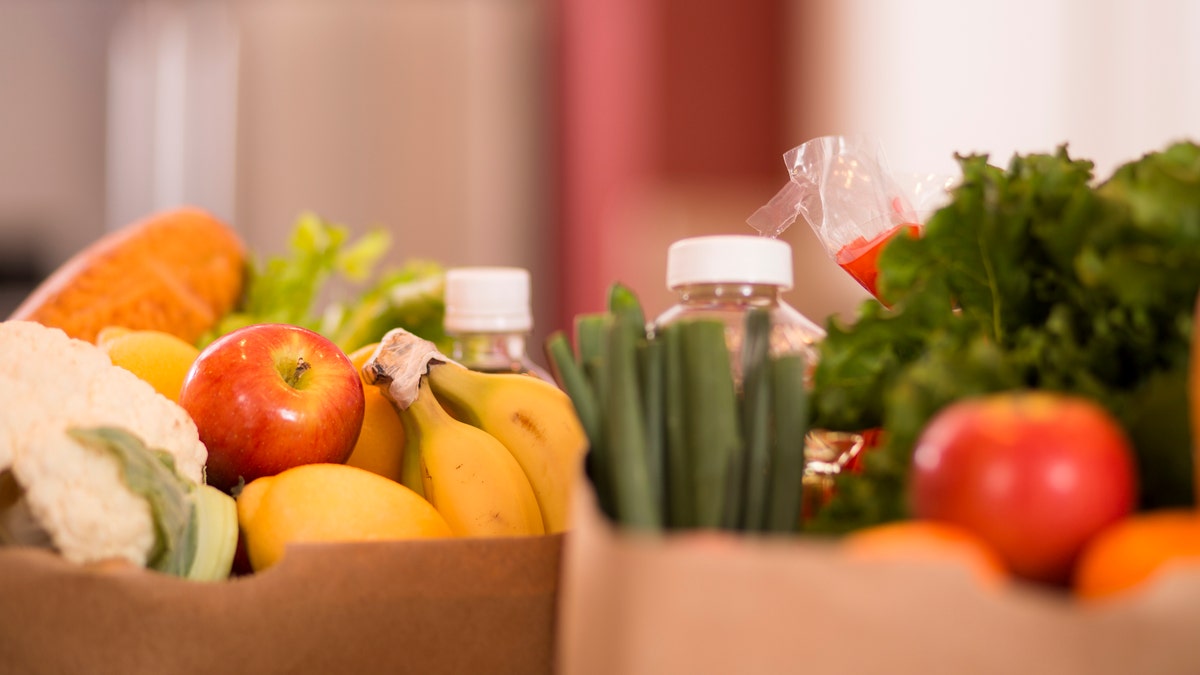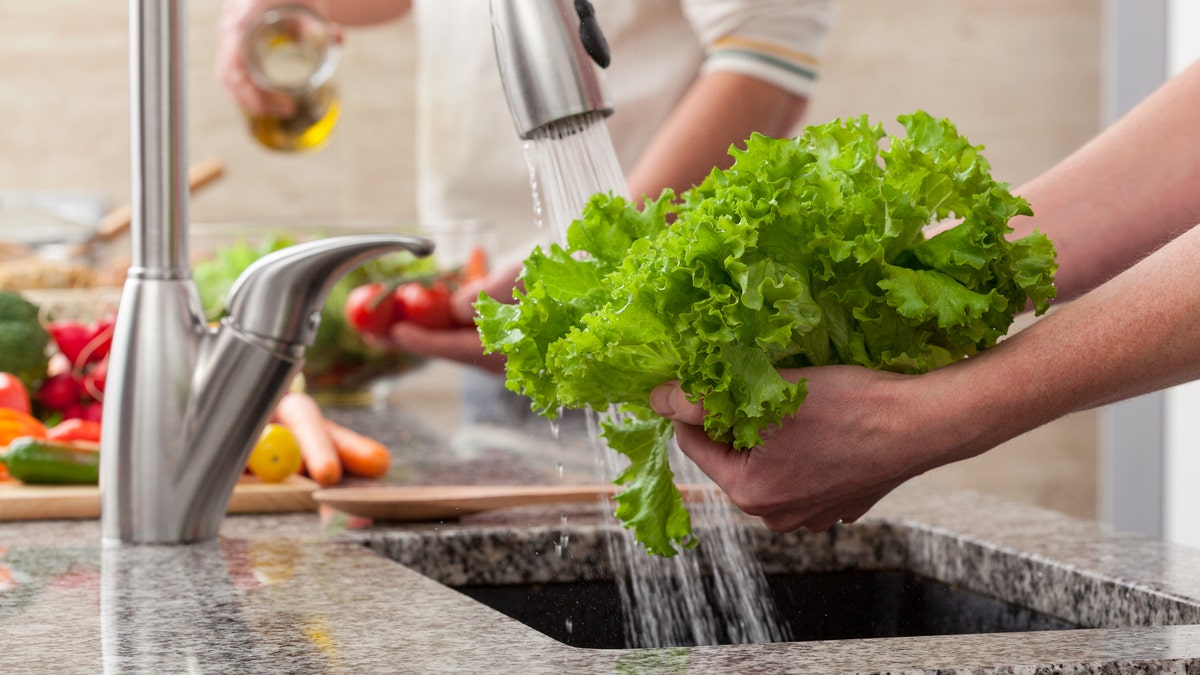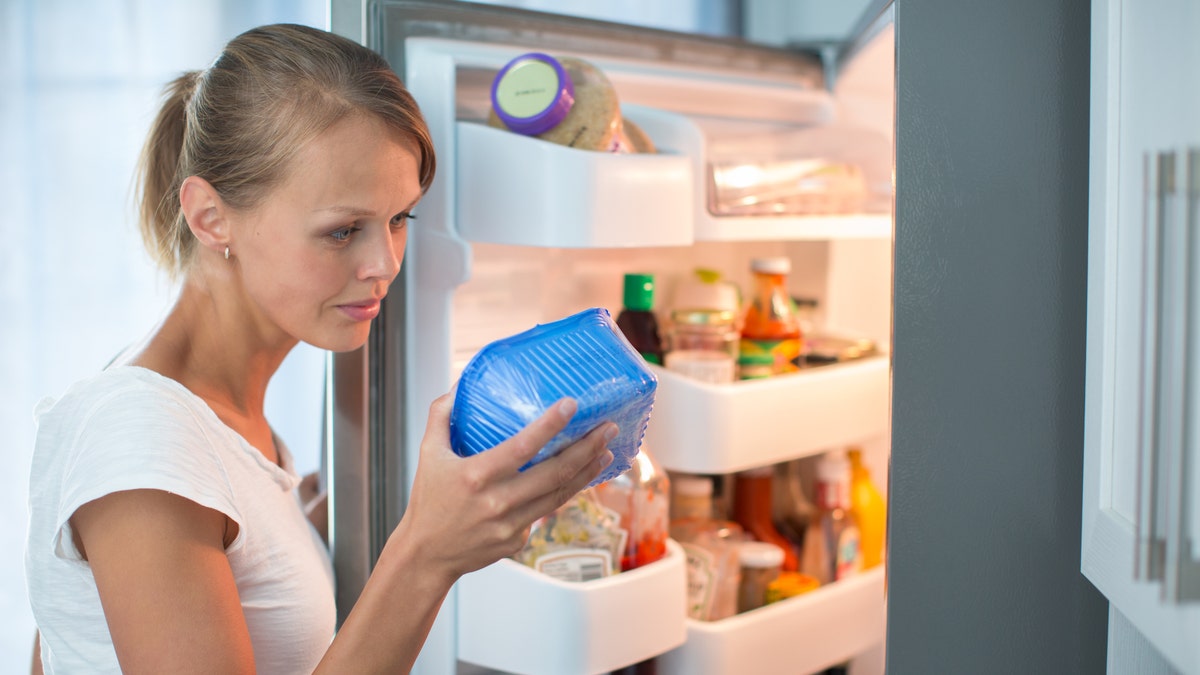
Healthy eating woman at the fridge eating grapes (iStock)
There are few household instances sadder than reaching for something to eat in your fridge and finding it covered in mold, or soaked and sticky from a container leakage.
How many times has a messy and crowded refrigerator foiled your impromptu eating plans? And how much food is really thrown in the garbage because it was unknowingly left to slowly perish behind that jar of who knows what?
We reported on a study earlier this year that found that the average American wastes about $400 worth of food every year — that’s enough food to provide three meals a day for 172 million people and to lift 10 times that amount out of hunger.
Keeping a clean and organized fridge will not only help you avoid dangerous cross-contamination, but it will also help to stave off bacteria growth like mold, help save money on grocery bills, and improve your overall consumption habits.
Feed your belly, not the trash, and check out these essential refrigerator organization techniques.
1. Follow the “FIFO” rule.

Grapes and apples in refrigerator ideal for diet (iStock)
“FIFO” stands for “first in, first out.” This is a common-sense idea that calls for using the oldest ingredients first — so finish up that last bit of milk before opening the next carton.
2. Invest in good containers.

Different types of veggies each in a platic container (iStock)
Buy quality food containers to store your food. High-quality containers will help your produce and leftovers last longer by protecting them from exposure to bacteria, air, and moisture. Better containers will also ensure your food tastes as good as it can since the produce won’t absorb other flavors and odors of nearby foods.
3. Know which foods emit ethylene gas...and the foods sensitive to it.
Fruits and vegetables produce ethylene gas, a hormone that expedites the ripening process. Some foods like apples, tomatoes, potatoes, bananas, and most other fruits emit large amounts of ethylene and should not be stored next to — and never in a bag with — ethylene-sensitive foods like leafy greens, carrots, cauliflower, herbs, or squash.

Bags full of groceries in paper sacks on a counter in a home kitchen. Food items include: apples, bread, lettuce, bananas, cauliflower and a variety of other vegetables and food items. Domestic kitchen can be seen in background. (iStock)
More from The Daily Meal
Use Your Muffin Tin for These 11 Kitchen Hacks
13 Amazing Ice Cube Tray Hacks to Make Life Easier in the Kitchen
4. Line drawers with paper towels.
Paper towels have the power to absorb excess water expelled by your produce. By drawing away this moisture, veggies will stay firmer longer and be less prone to spoilage.
5. Don’t wash until you are ready to eat.

Woman in the kitching with cup of coffee, she is looking at the grocery bags to be unloaded that are on the counter. (iStock)
Bacteria loves moisture so washing your foods before storing them can actually encourage mold to grow and spread.
6. Be on the look-out for mold.

Washing fresh vegetables for a salad with an alive oil (iStock)
The adage "one rotten apple can spoil the whole bunch" also holds true for other fruits and vegetables. If you see a leaf of a scallion looking old or one berry starting to grow mold, remove it immediately from the pack-- sacrifice one in order to save the others before it's too late.

Is this still fine? Pretty, young woman in her kitchen by the fridge, looking at the expiry date of a product she took from her fridge - (iStock)
